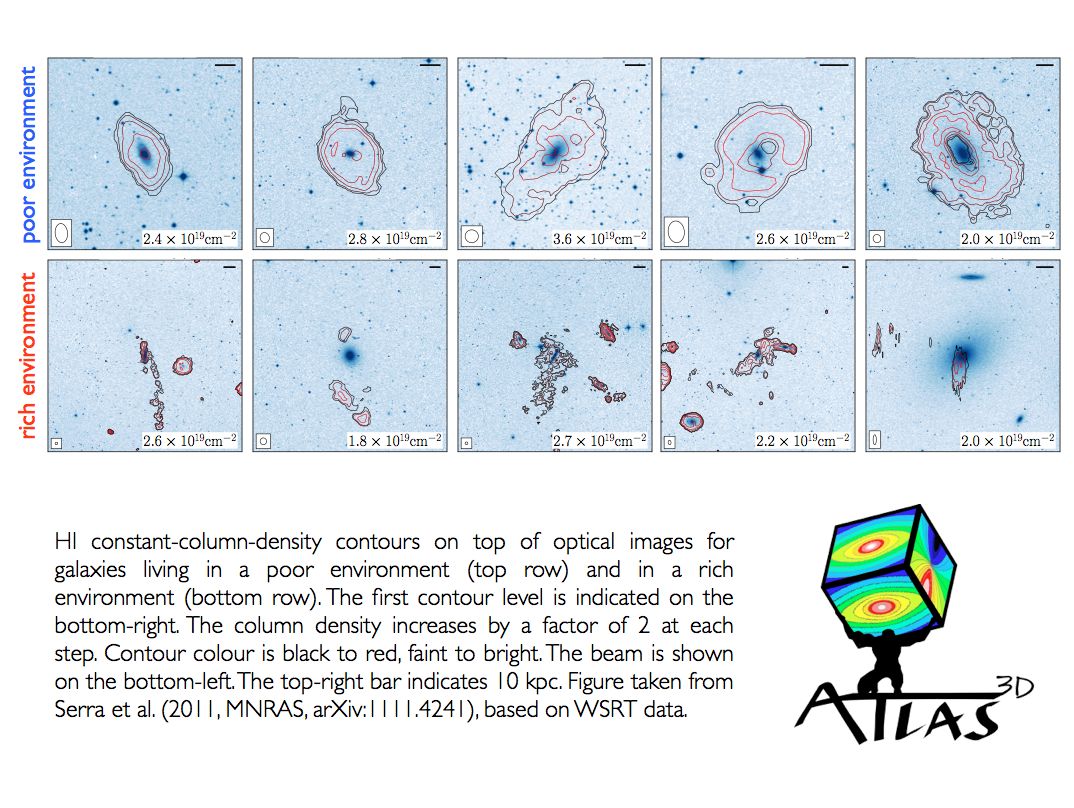Daily Image
22-11-2011Atlas3D and the importance of galaxy environment
| Submitter: | Paolo Serra |
| Description: | An idea at the core of our understanding of galaxy formation and evolution is that galaxies do not live in isolation. Instead, they are constantly interacting with one another and with the gaseous medium around them. A powerful demonstration of this is the morphology-density relation. In low-density regions, where galaxies live far from one another, most of them are spirals -- flat discs characterised by blue spiral arms where new stars are continuously born. In high-density regions like galaxy clusters most galaxies are rounder in shape and dominated by red, old stars. These are called early-type galaxies. Atlas3D is an ambitious survey aimed at studying early-type galaxies. Within this project we find hints that the morphology-density relation is driven by the "local" environment of a galaxy -- what really matters is the number of neighbours within a few 100's kpc from it. One of these results comes from a large amount of Westerbork data taken in order to study the neutral-hydrogen (HI) gas content of early-type galaxies. We find that early-type galaxies in poor "local" environments host typically giant HI discs with radius up to many tens of kpc. These systems are very regular, indicating that the host galaxy has enjoyed a quiet life for a very long time. The situation is very different in richer environments like galaxy groups and at the outskirts of galaxy clusters. Here HI exhibits typically a very disturbed morphology. In many cases long HI tails stretch from the host galaxy into the surrounding space, demonstrating that some gas may have recently been removed from (or accreted onto) the galaxy. Early-type galaxies in these environments are evolving because of the interaction with what is around them. At even denser environment densities, in the very centre of clusters, hardly any HI is found. Galaxies live close to each other and immersed in a hot medium, which makes it very easy for them to lose their HI and very hard to re-accrete some. All this demonstrates that the evolution of early-type galaxies is far from finished and that environment plays a key role driving it. These and many more results are described in the first dozen Atlas3D papers recently published or submitted for publication. Check them out and stay tuned for new results at http://purl.org/atlas3d ! |
| Copyright: | Atlas3D team/ Astron |
| Tweet |  |
